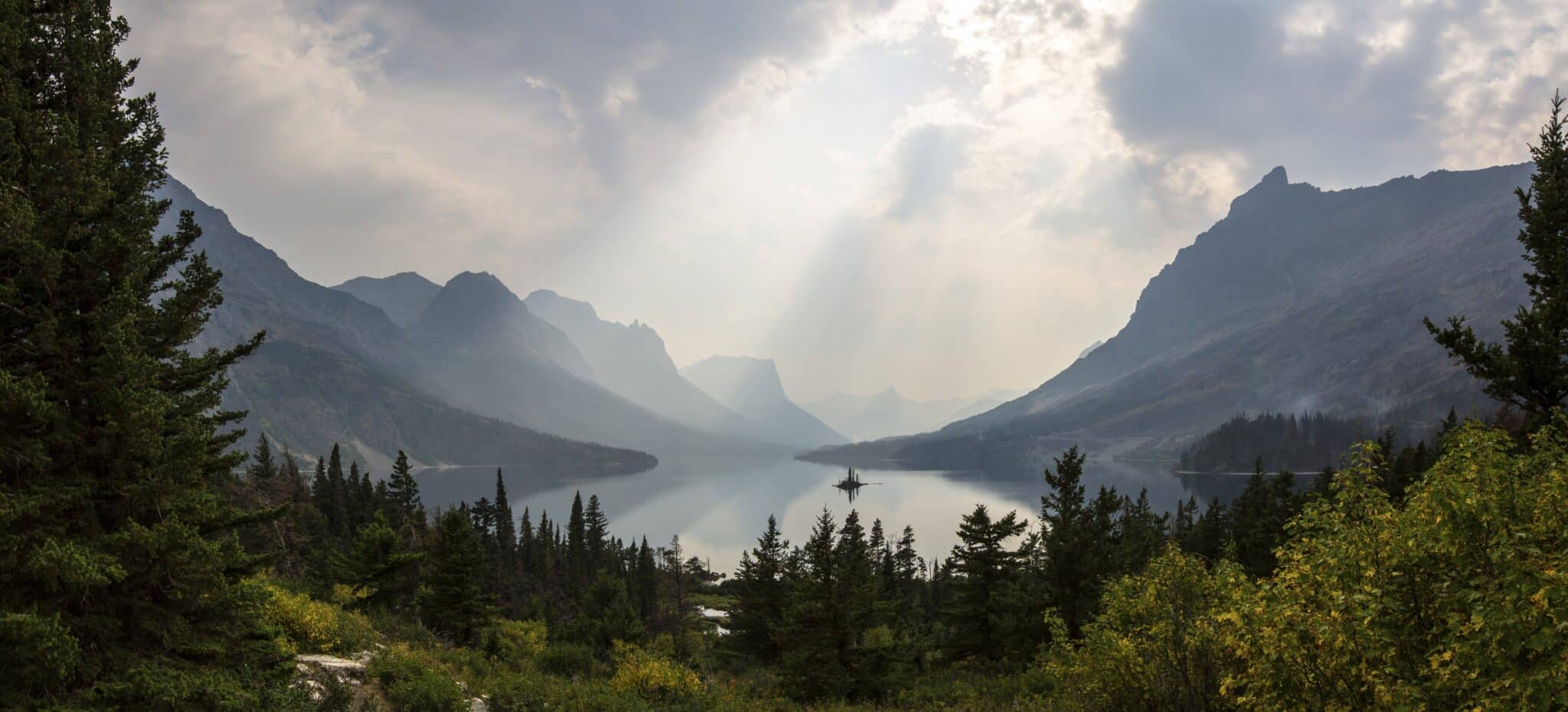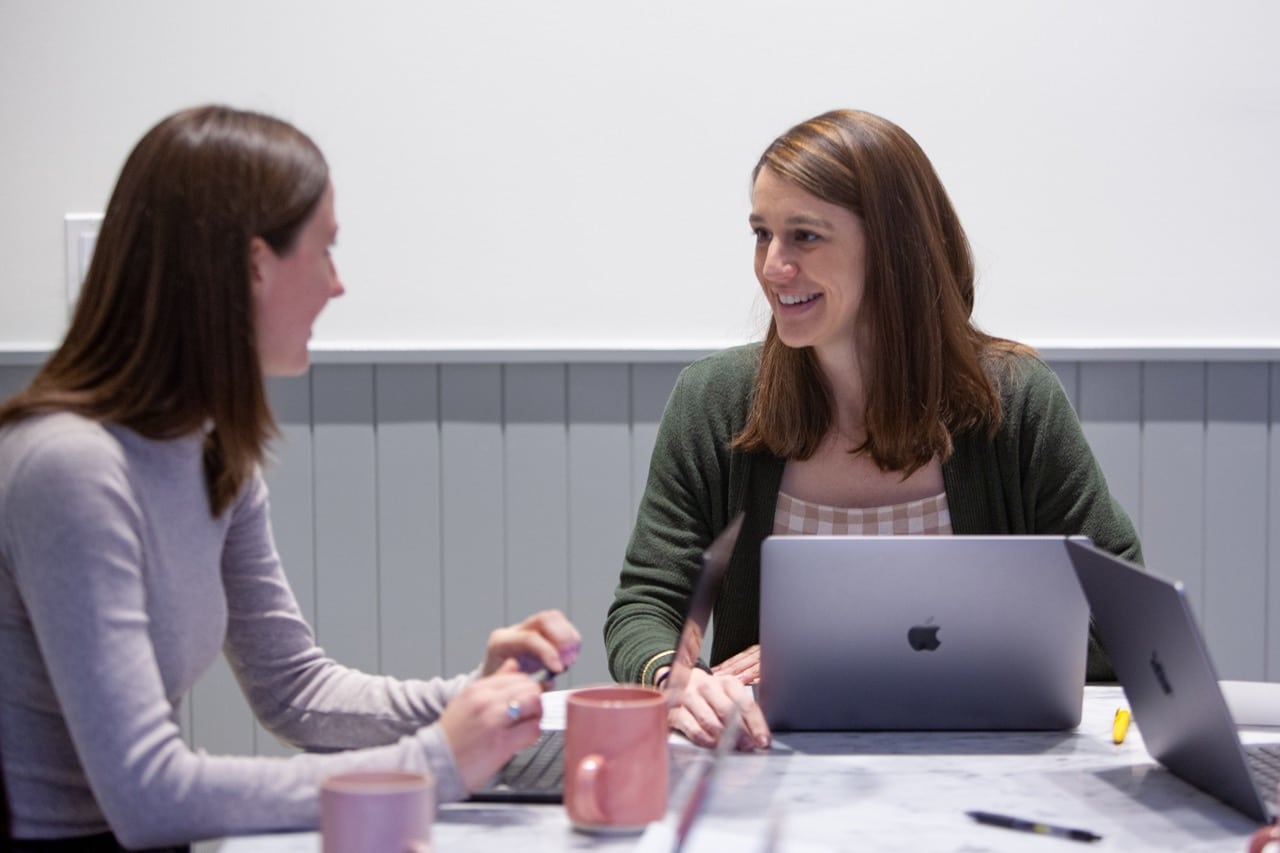The following is a transcript of our podcast conversation with Anu Arora. You can listen to the full episode on Spotify or Apple Podcasts.
Sarah
Hello and welcome to Humans Beyond Resources, an HR podcast by Reverb, where we cover topics from culture to compliance. Reverb believes that every decision a leader makes reverberates throughout the organization. From hiring your first employee to training your entire workforce. We believe in building healthy, inclusive cultures that engage your team. I’m your host, Sarah Wilkins. So today I’m speaking with Anu Arora leadership coach and mindfulness expert on what mindful leadership is, what the benefits are, and how you as a leader can practice it. Welcome, Anu.
Anu
Yeah, I’m so glad to be here, Sarah. Thanks for bringing me on.
Sarah
Yeah, I’m excited to learn from you, always learning new things from you. So thank you. Let’s dive into some questions. So first, just tell me more about you and what set you on a journey of mindful leadership.
Anu
So, yeah, thanks for asking that question. It takes me back to my corporate career. I was managing a large team, and one of the challenges I was having was I had to lay off a part of the team. And it made sense from a business perspective, but I just could not humanly bring myself to do that. It was just too hard for me. I had no experience in it. And I could have numbed myself and said, oh, I’m just executing orders. It’s making sense, and I am executing orders. And yet it was becoming difficult. I was having sleepless nights, nightmares about that and the serendipity. What happened was one morning when I went to work, I saw in my inbox an email popped up and I was part of this community alias group or some diversity alias, and it said, my mom is here from India to look after our new baby. But she’s also a mindfulness and meditation teacher and she’s wanting to continue her teaching journey while she helps us with the baby. If there are people who are interested, please let me know. And I was like, yeah, I’m interested. And so next morning at 05:00 a.m. At dawn, I was there and I said, I’m committing to this. I need some tools. The challenges I’m facing in my career, I can’t numb myself to them, I have to face them, and there has to be another way. And so that started my journey on mindfulness. And I found tools, I found very practical tools to go and manage, of course, giving that or notices of layoff to so many people and do them in a way where I could do both. The two wings of mindfulness are wisdom and compassion. Wisdom is seeing things clearly as they are. So, yeah, this is happening and it’s hard. And then compassion is the compassion for myself that I am experiencing this in a certain way. And I have compassion for myself and compassion for each individual. So how I implemented that layoffs was way different than I would have if I didn’t have these tools of mindfulness with me. So that was the beginning of my journey with mindfulness.
Sarah
Yeah. Thank you for sharing. And those are always difficult times, and we at Reverb want to make sure those are approached too right. With kindness and respect and dignity and all of that. And so to hear you go on that journey to do it, but do it in a way that was mindful and supportive of you and your team is great. And so you kind of went into the two arms of mindful leadership. But one thing I read is something you had written around kind of the difference between compassion and empathy. And can you talk just a little bit more about that?
Anu
Yeah. And Lot has been talked about empathy and saying that, oh, in our world, we need empathy, leaders need empathy. And the challenge with empathy is this when we are empathetic, it means we are putting ourselves in other people’s shoes. And sometimes that takes away we start to feel the pain, so it takes away from our executive brain function and we may not be as useful to the other person. And I give that example of my uncle who’s no longer there, but when my aunt used to have labor pains, my uncle would experience labor pains as well. And then at the time when it was time to drive her to the hospital, she realized that he couldn’t even tie his shoelaces. He was tying the laces together, the two shoes, and then he couldn’t walk, and so she had to drive herself and he would sit by her. So he had a lot of empathy for what she was going through, but he was not useful to her in that moment. And so compassion is that I realize what’s going on, but how can I step in what will be useful here in the way I can support you? And so I encourage leaders when I talk about mindful leadership, I encourage them to look at compassion and not just empathy. Yeah, empathy is required, but let’s just also bring it to the level of compassion.
Sarah
Yeah, thank you for sharing that. And so to go in a little bit further on kind of how you would describe mindful leadership, you shared kind of the wisdom and compassion and the difference between compassion, empathy. But what else would you say around how you describe mindful leadership in yeah.
Anu
Yeah. So John Kabadzin, he popularized mindfulness to the know. It came in through many mindfulness practitioners, but his definition took off and his definition was that mindfulness is present moment awareness. So I am aware of the present moment of what’s happening. So that clearly seen what’s happening within me and outside me in a non judgmental way, which is really important. So when I am non judgmental about it, then I am nonreactive about it. And when I don’t react to it, I can mindfully decide what the next action is. So we want to bring that definition of mindfulness into leadership, because what happens mostly in a business world, things are moving very fast. We live in this VUCA world, which is changing, which is volatile, which is uncertain, this chaotic, and we need to make decisions fast. And a lot of times we get into this mode of relentless spiral without even taking a moment of reflection and pause. And this is what mindfulness is inviting you to that get connected to yourself and your surroundings in that present moment to see clearly. Because if you don’t see clearly, you don’t make wise actions, you don’t make wise decisions. You are not working from a place of resolution. You are working from a place of reaction. And so that is exactly what Mindful leadership is. It allowing us to see clearly and then take a wise action.
Sarah
How have you seen that really benefit leaders and organizations when their leaders are practicing Mindful leadership?
Anu
Yeah, I see it in all places, right? Leadership in the corporate leadership at home. And the way I’ve seen it is that we react, right? For example, anger is a very common reaction when we see things which are not happening the way we want them to be. And we express it. Sometimes we’ll numb it. So it’s either way. Either we express it or we say, okay, let me just go watch some social media and take my mind off that crappy thing that happened to me. And what mindfulness is doing is inviting you to see investigate that anger. And so let me give you an example. I was talking to a client of mine, and so do I do Mindfulness coaching. And she was like, okay, I cannot stand this. She’s like, I am right here, and the other person is wrong. And I’m so angry about it. And I said, why don’t you write a letter about your anger and then burn it? And she says, well, what do I do with the letter? Then? Not burn them, but burn the letter. So I was giving her waste, and I said, okay, let’s take a step back and let’s investigate this anger. Let’s just say, what is it you are angry about? And just investigating it a little bit more. Where does it show up in your body? How does it show up? How do you know that you are angry? And that what if you were to give this anger some space to exist in your body and which was really very foreign to her, because most of us live a few inches away from our body, like Mr. Duffy from James Joyce character in one of his short stories. And so it’s just bringing us in that moment, present moment awareness that I am feeling this anger and this is why I am feeling it. And if I was to give it a space, what does the anger want from me? Or what is it I can do to respond more mindfully, more wisely, seeing it clearly? With more compassion then what would this expression of anger look like? And usually it is different. So when we look at it that.
Sarah
Way and all of this sounds really great and it sounds like it also requires you to pause, take some time, look within and back to kind of in the corporate world or in business we’re all kind of maybe moving really fast and that feels maybe not possible or hard. Do you have people that experience that and kind of push back on this idea of mindful leadership?
Anu
Most of people who come to me are already struggling in some ways, which means that that selection already happens. So they are ready to experiment. But always there are enough who will also push back, especially if I’m trying to enter into a new customer segment. I’m going there and talking about this and say then they say, no, mindfulness doesn’t work for us. And I once worked for Defense Organization and the leader there told me that don’t bring up whatever you do ANU don’t bring up the word mindfulness. So I said, okay, we’ll bring it in some other form. So we just gave it a different name.
Sarah
And did that work?
Anu
That worked nice yeah.
Sarah
Reframing what it is to get the outcome desired.
Anu
Presence. Call it presence, right? Call it self awareness, call it wisdom, but presence usually is a good word, which I have substituted for mindfulness. So it doesn’t have to be at the end of it. What we are creating is the present moment awareness. And when there is present moment awareness, I am working not from a place of fear. I can bring my executive brain to make wiser decisions for me, and so I’m going to be in a better place. So at the end of it all feels good, it all feels right, but because we are so habituated to reacting and in fact, the world almost expects us to make a decision instantly and not giving ourselves the space. And so then when we start giving ourselves space, we recognize that, oh, this works. Now who cares whether we call it Mr. Duffiness or mindfulness? It’s working.
Sarah
It’s working. Yeah, no I think that’s great and so you kind of mentioned this already when you were describing kind of mindful leadership but anything else you would say about how one would really set out to practice mindful leadership in their day to day?
Anu
Yeah, I think you talked about pause, right? Pause is that biggest tool. Seven second pause can change our neurochemistry 7 seconds and that’s not that long, it’s just like a couple of breaths so if you were to even count it in terms of it’s two breaths, two breaths, seven second pause and that’s number one that’s the starting point. There’s a great technique which I learned from my teacher Tara Brack and it’s called Rain technique R-A-I-N-I think it should be a must have tool for leaders. So Rain is an acronym. R stands for Recognize. So when we are in moment of stress we want to pause. So we talked about pause but here we are going to extend the pause to look at what’s happening in the current moment, not going into the content of the story because we can easily get caught in the drama of the story. And then we said that and she said that and now it’s a huge mess. No, stay out of the story. Recognize. What are you experiencing? What emotions are present? What thoughts are present? What are you experiencing now? Now the second piece is the hardest piece for leaders. Really, really hard because it’s allow. A is for allow. Allow these things to be present as is because that is what mindfulness is. Yes, anger is present because at this moment we are allowing them to be there. Not meaning we’re going to act on it, but we are going to allow those things to be present just as it is. That is the allow. Now the third piece, once we can allow, then we can go into the third piece, which is the investigation piece. Inquiry. Where is it? It shows up. And there are two ways in fact, both ways we will investigate. One is the cognitive investigation, which is what is the story behind this anger? So you start asking what’s the story? Why do I get angry at such things? I always get triggered at these things. What is the story behind this? And then we keep investigating the story story and there could be multiple levels of story with that. The second piece is an easier piece. If we learn to stay in our bodies or just get in touch with our bodies is where in my body does it show up? And every emotion has its correlation with your physical somatic being, which means a lot of times people will just really their shoulders will hunch up or they’ll have knot in their stomach or some people get headaches, some people get stomach aches. So somewhere your stress will appear on your system. And once you become aware of that oh, here’s, here in the body. It’s right there. And then the last piece is the end piece which is nurture and nourish. What does this part of me need now for me to relax into it and sometimes just a few deep breaths. Sometimes let’s take a little walk. Sometimes let me have a cup of hot tea. Sometimes just let me step away from this meeting for 15 seconds, 1 minute. I’ll be better off being away from it than being in it right now. So we can then take a wise action. So this is an extended pause, not just the short pause.
Sarah
The short pause. Yeah. No, I like that acronym and I think we really like the practical things.
Anu
That someone can do.
Sarah
So anyone would be able to take that away and kind of try to practice that today. So that’s great. Thank you for sharing. Can’t believe it’s already coming to the end, but any closing thoughts you have as you have others think about how to incorporate mindful leadership into their daily lives.
Anu
Yeah, and people think about this and then they worry about that. It’s not for me. And my invitation is that just let’s start small. In coaching world we always say that small feed, small experiments, one experiment at a time. So the invitation is that is there a short practice of just when you start a meeting, just bringing your feet to the ground or bringing your feeling, your buttocks, your sit bones on the chair or whatever way bringing a cup of hot tea or a cold beverage in your hand and feel the temperature of that beverage. It’s just that simple. And then we start becoming aware of the present moment with those simple steps.
Sarah
Thank you. Thank you so much for everything. I already have some things that I can take away from myself, so I really appreciate this.
Anu
Thank you so much Sarah, really appreciate again the invitation to do this. I’m always wanting to spread mindfulness to the world one bit at a time.
Sarah
Thank you for listening to this episode of Humans Beyond Resources. Visit reverbpeople.com to find free resources, subscribe to our newsletter and connect with our team. If you haven’t already, subscribe to stay up to date on all of our upcoming episodes. We look forward to having you as part of our community.














